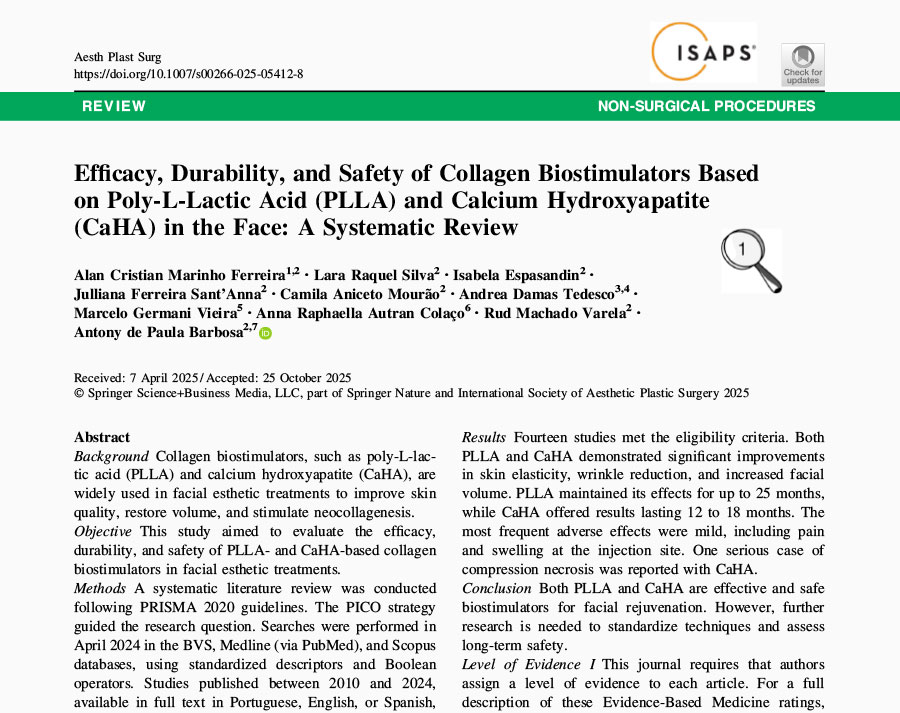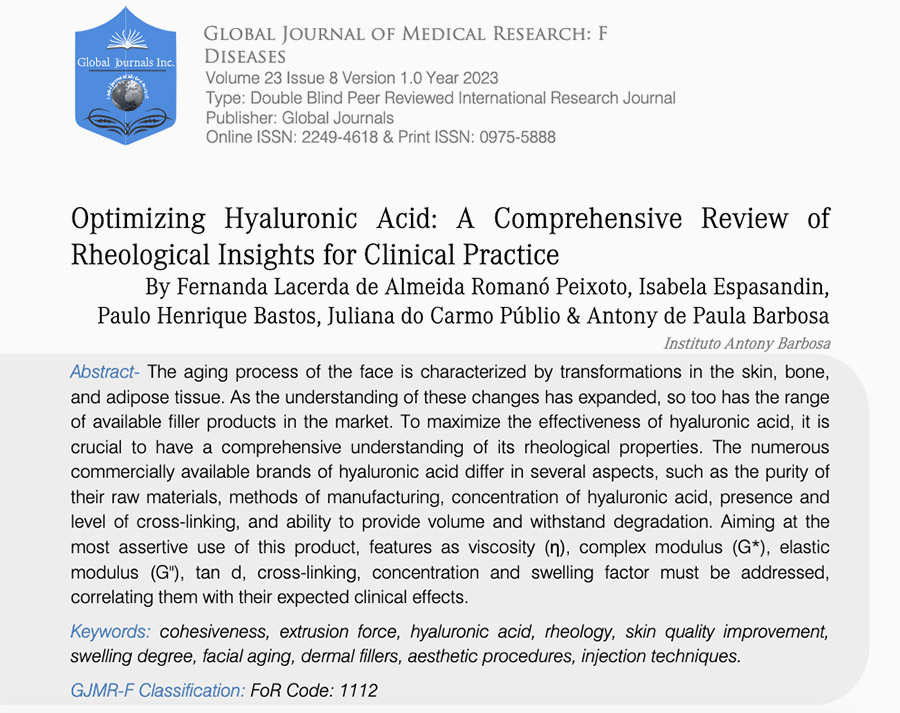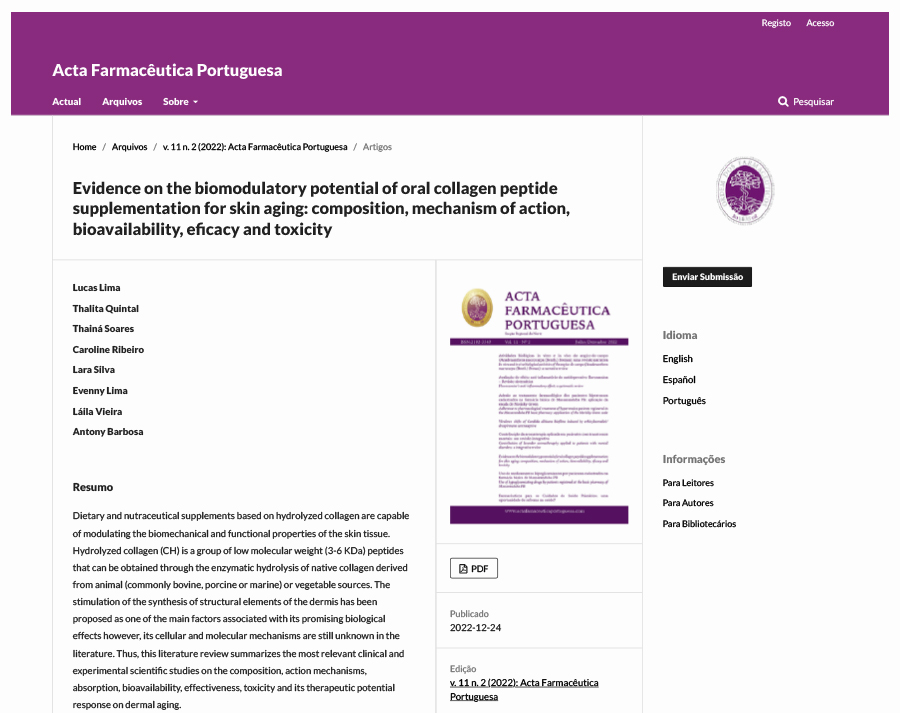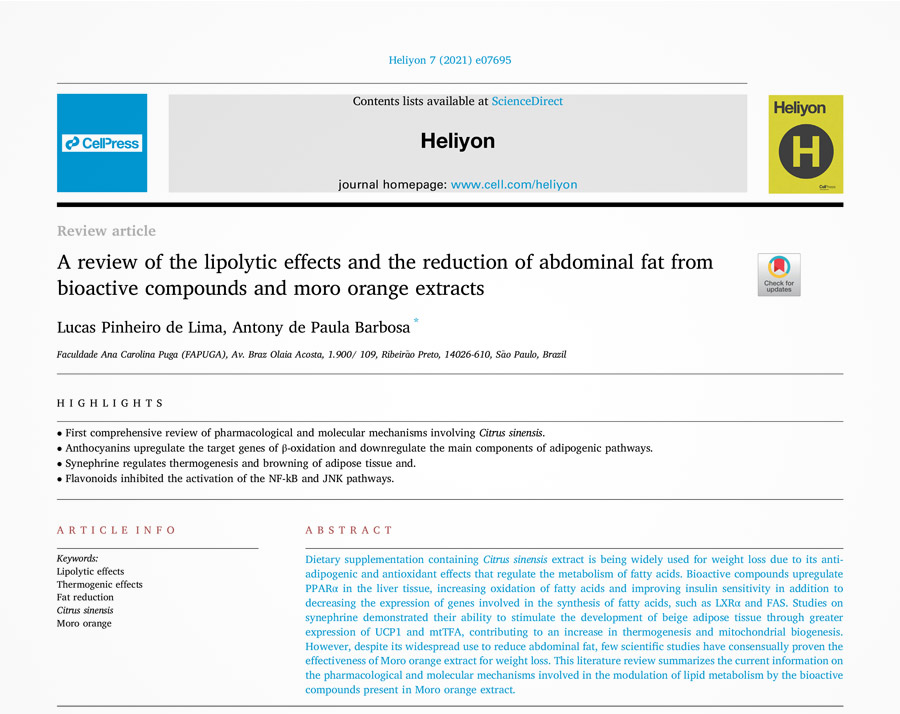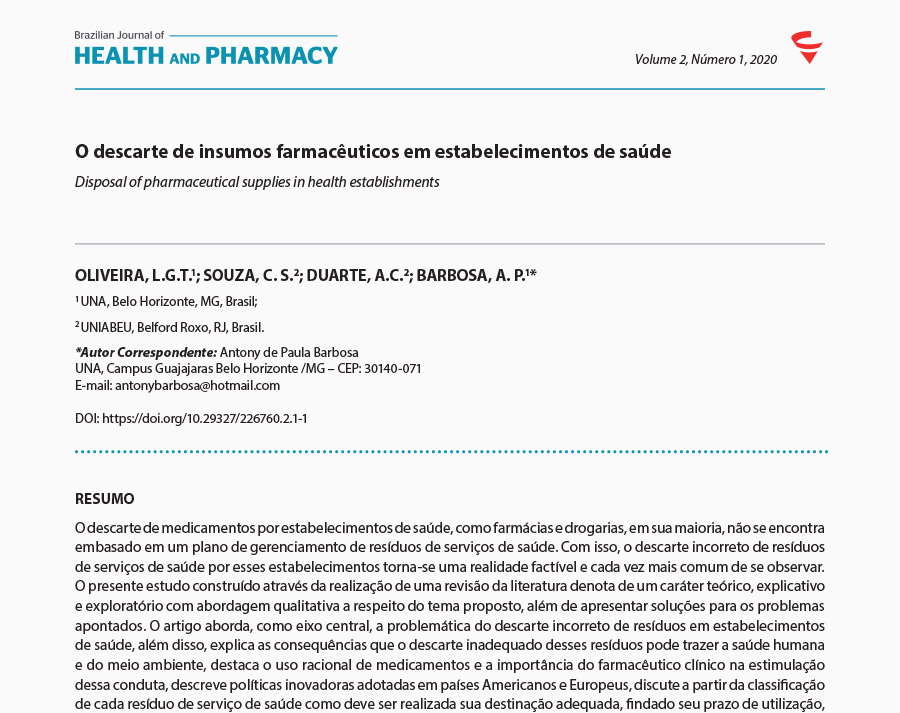O descarte de medicamentos por estabelecimentos de saúde, como farmácias e drogarias, em sua maioria, não se encontra embasado em um plano de gerenciamento de resíduos de serviços de saúde. Com isso, o descarte incorreto de resíduos de serviços de saúde por esses estabelecimentos torna-se uma realidade factível e cada vez mais comum de se observar. O presente estudo construído através da realização de uma revisão da literatura denota de um caráter teórico, explicativo e exploratório com abordagem qualitativa a respeito do tema proposto, além de apresentar soluções para os problemas apontados. O artigo aborda, como eixo central, a problemática do descarte incorreto de resíduos em estabelecimentos de saúde, além disso, explica as consequências que o descarte inadequado desses resíduos pode trazer a saúde humana e do meio ambiente, destaca o uso racional de medicamentos e a importância do farmacêutico clínico na estimulação dessa conduta, descreve políticas inovadoras adotadas em países Americanos e Europeus, discute a partir da classificação de cada resíduo de serviço de saúde como deve ser realizada sua destinação adequada, findado seu prazo de utilização, e menciona políticas adotadas por alguns estados brasileiros que apontam para um desenvolvimento sustentável e mitigador de impactos que estes resíduos podem trazer a saúde humana e do meio ambiente. O descarte incorreto de resíduos de estabelecimentos de saúde pode provocar alterações digestivas na saúde humana, como quadros de alteração gastrintestinal, insuficiência hepática e renal, episódios que afetam o sistema nervoso central como: agitação, ansiedade, depressão respiratória, coma. Muitos desses resíduos ao serem descartados de forma incorreta favorecem à resistência bacteriana, mutagênese e carcinogênese. Políticas como logística reversa e campanhas de destinação adequada de resíduos de medicamentos são algumas ações que têm obtido êxito na destinação correta dos resíduos de serviços de saúde no Brasil. O farmacêutico clínico por possuir uma gama de conhecimentos acerca de medicamentos e efeitos adversos tem se tornado um profissional cada vez requisitado nos estabelecimentos de saúde não apenas para garantir um gerenciamento adequado de resíduos de serviços de saúde, como também para estimular o uso racional de medicamentos por parte da população.
